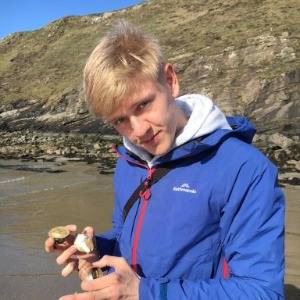Nov 26, 2021
Antioxidant rescue of C. elegans behaviour on Keio E. coli mutants
- 1Imperial College London, MRC London Institute of Medical Sciences (LMS)
- Behavioural Genomics

Protocol Citation: Saul Moore 2021. Antioxidant rescue of C. elegans behaviour on Keio E. coli mutants. protocols.io https://dx.doi.org/10.17504/protocols.io.bz66p9he
License: This is an open access protocol distributed under the terms of the Creative Commons Attribution License, which permits unrestricted use, distribution, and reproduction in any medium, provided the original author and source are credited
Protocol status: In development
We are still developing and optimizing this protocol
Created: November 18, 2021
Last Modified: November 26, 2021
Protocol Integer ID: 55230
Abstract
Protocol for screening candidate behaviour-modifying E. coli BW25113 single-gene deletion mutants from the 'Keio Collection', to investigate their effects on Caenorhabditis elegans behaviour in the presence of antioxidants.
Materials
12 x Whatman Square Well Flat Bottom UNIPLATE, 7701-1651
25 x ThermoFisher Scientific Nunc™ 96-Well Polystyrene Round Bottom Microwell Plates, Non-Treated, 268200
3 x 90mm Petri plates
3 x 150mm Petri plates
2 x 50mL Erlenmeyer flask
1 x 96-pin replicator
500mL LB broth media
1L NGM agar (for ingredients, see protocol for making NGM agar)
Preparing NGM agar + pouring plates
Preparing NGM agar + pouring plates
Prior to screening, prepare the materials needed for screening C. elegans on selected Keio E. coli mutants:
For a single experiment replicate (10 biological replicates of each mutant, screened in 2 runs with the laboratory's 'Hydra' imaging rig):
- 12 Whatman 96-square-well flat-bottom plates (aka. 'imaging plates')
- 25 Nunc™ 96-round-well round-bottom microwell plates (aka. 'culture' plates)
- 10 x 15mL Falcon tubes
- 2 x 50mL Erlenmeyer flasks
- 3 x 150mm Petri plates (aka. 'nursery plates')
- 3 x 90mm Petri plates (aka. 'maintenance plates')
Make 1L normal Nematode Growth Media (NGM) agar, following the protocol:
Protocol

NAME
Making normal NGM for imaging plates (Cabreiro Lab)
CREATED BY
Saul Moore
Pour 20ml NGM agar into each maintenance plate, and 50ml NGM agar into each nursery plate, following the protocol for Plate pouring (dx.doi.org/10.17504/protocols.io.6bhhaj6).
Keep the remaining agar warm in a water bath set to 65°C, for dispensing into 96-well imaging plates afterwards
Using the Integra ViaFill, dispense 200μL of NGM agar into each well of the 10 imaging plates, following the protocol:
Protocol

NAME
Dispensing agar into multiwell platesCREATED BY
Ida Barlow
Leave the plates on the lab bench (with lids on) until the agar has cooled and solidified (approximately 1 hour, timing depends on humidity)
Measure the weight of 3 imaging plates (with lids on) and record average plate weight on day of pouring
Dry the imaging plates under a hood (or drying cabinet) until the plates lose between 3-5% of their original plate weight (with lids on)
Store the imaging plates upside-down at 4°C until used for experiments
Seeding Petri plates + worm maintenance
Seeding Petri plates + worm maintenance
Inoculate 10ml LB broth media with E. coli BW25113 (Keio background wild-type strain, used as negative control and for raising worms, no Kanamycin) in an Erlenmeyer flask for overnight culture following the protocol:
Protocol

NAME
Inoculating a Liquid Bacterial Culture
CREATED BY
Priota Islam
Place the inoculation in a shaking incubator at 37°C at 200 rpm and leave to grow overnight
Remove the BW culture from the shaking incubator and place in 4°C fridge until seeding
Remove the plates from storage and the BW culture from the fridge, and leave on the bench for approximately 30 minutes to acclimate to room temperature
Using aseptic technique, seed the maintenance plates each with 400μL of BW25113 culture
Leave under hood until dry (with lids on, timing depends on humidity)
Using a platinum pick, gently pick 30 adult N2 Bristol C. elegans onto each maintenance plate, and store in an incubator at 20°C (Monday)
After 24 hours, remove the adult worms, leaving the eggs behind to hatch into L1 larvae (Tuesday)
Inoculate a further 10ml LB broth media with BW25113 bacteria for overnight culture, following the protocol in go to step #9 and place in a shaking incubator at 37°C, 200 rpm (Wednesday)
After 24 hours, remove the culture from the incubator, and the nursery plates from storage, and leave to acclimate on bench top for 30 minutes (Thursday)
Seed the nursery plates each with 1mL of fresh BW25113 culture. Leave under hood until dry
Wash the worms off the BW-seeded maintenance plates, into two 15ml Falcon tubes (Friday)
Perform an egg prep on worms in the Falcon tubes, following the protocol:
Protocol

NAME
Egg Prep for Bleach Synchronization (Cabreiro Lab)
CREATED BY
Saul Moore
At around noon the next day, wash L1 larvae off the empty plate and re-feed onto the BW-seeded nursery plates using a glass Pasteur pipette. Aim to dispense around 1000 worms per plate. Incubate at 20°C (Saturday)
Inoculating from frozen stocks (96-well)
Inoculating from frozen stocks (96-well)
Fill all wells of the 10 culture plates with 200μL LB broth media. Add 50μg/ml Kanamycin to all wells except the wells for the wild-type BW25113 control strain.
Remove the required stock plates from -80°C containing the strains for antioxidant testing. Gently remove the aluminium film and leave to partially thaw for a minute or so
Safety information
To avoid damaging the bacterial stocks through repeated freeze-thawing, do not let the wells completely defrost. Just enough to be able to pick up some cells with the replicator.
Inoculate individual vials, containing 4mL LB broth and 50μg/ml Kanamycin, with the desired strains for antioxidant testing from Keio frozen stock plates, following the protocol:
(Tuesday)
Protocol

NAME
Inoculating a Liquid Bacterial Culture
CREATED BY
Priota Islam
Wet some tissue with MilliQ water, wrap the culture plates in the tissue, and incubate overnight at 37°C (no shaking)
Safety information
The tissue provides humidity that aids growth, while the presence of Kanamycin should prevent contamination
Also inoculate 10mL LB broth media in an Erlenmeyer flask with BW control, and place in a shaking incubator overnight at 37°C, 200 rpm
Using a multi-pipette, fill all wells of 10 x 96-well culture plates with 200μL LB broth. Fill all wells with 50μg/mL Kanamycin, except for wells designated for BW control strain.
(Wednesday)
Remove the overnight cultures from the incubators. Using a sterile pipette tip (or inoculation loop), inoculate the wells of the culture plates with strains from the overnight culture vials, as per the desired plate layout. Inoculate the wells with no Kanamycin with the BW control strain. Incubate cultures overnight at 37°C.
Optional: Make a template stock plate for -80°C storage with the strain layout desired: mix 200μL culture with 15% glycerol in each well
Remove the overnight cultures from the incubator. Again, fill the wells of 10 culture plates with 200μL LB broth. But this time do not add Kanamycin. Inoculate the second round of overnight cultures from the first, using a 96-pin replicator, following the protocol:
(Thursday)
Protocol

NAME
Growing overnight bacterial culture in 96WP (Cabreiro Lab)
CREATED BY
Saul Moore
Seeding imaging plates (96-well)
Seeding imaging plates (96-well)
Remove the imaging plates from 4°C storage and record the average weight of 3 randomly selected plates
(Friday)
Ensure that imaging plates have lost approximately 3-5% of their original weight. Place under a hood or drying cabinet until they have
Remove overnight cultures of Keio strains from 4°C storage. Using the Integra ViaFlo, seed 10μl of bacterial culture from the wells of each overnight culture plate into the corresponding wells of each imaging plate
Safety information
Ensure correct plate orientation under the Integra ViaFlo, with well A1 in the top left corner
Place seeded plates under a hood to dry for 20 minutes, then place in an incubator at 25°C (no shaking) for 7 hours 40 minutes (total lawn growth time: 8 hours)
After 8 hours, remove the plates from the incubator and store at 4°C
Adding antioxidants (96-well)
Adding antioxidants (96-well)
On the day of tracking, remove the seeded imaging plates from 4°C, and dry for 30 minutes under a hood
(Tuesday)
Remove the antioxidants from 4°C. Prepare an empty 96-well plate with 100μL of 10μg/mL antioxidant (in PBS 'A' buffer) in each well as per the desired experiment design layout for antioxidant treatment.
Using the Integra ViaFlo, dispense 7μL of antioxidant solution from the prepared treatment plate into each well of 10 imaging plates
Safety information
Ensure correct plate orientation under the Integra ViaFlo, with well A1 in the top left corner!
Leave to dry under a hood for a further 30 minutes
COPAS worm-sorting + Hydra tracking (96-well)
COPAS worm-sorting + Hydra tracking (96-well)
Prior to tracking, ensure that the imaging cave air conditioning is turned on (and there has not been a power-cut) and also empty the dehumidifier waste water tray (see pre-imaging checklist)
Safety information
Normal temperature range: 19 - 21°C
Humidity: 35 - 45%
Remove the nursery plates from the incubator. Wash the worms off the plates into two 15ml Falcon tubes using approximately 10mL sterile PBS 'A' buffer
Fill up the tubes to 15ml with PBS 'A' and centrifuge at 1000rpm for 2 minutes
Remove the supernatant using a Pasteur pipette
Repeat steps go to step #43 to go to step #44 four more times to thoroughly rinse off any remaining control BW25113 bacteria
Re-suspend the worms and divide them equally into two 50ml Falcon tubes (for the COPAS), and fill them both up to approximately 40ml with PBS 'A'
Use the COPAS to dispense three Day1 adult worms into each well of the 10 imaging plates, following the protocol:
Protocol

NAME
COPAS wormsorter v.2
CREATED BY
Bonnie Evans
Leave the plates to dry under a hood for 30 minutes to 1 hour (until dry, timing depends on humidity), then place in incubator at 20°C until tracking (at +4 hours on food)
Safety information
Check that worms are crawling (not swimming) on plates, and lawns appear matt in colour (not wet)
30 minutes prior to tracking with the Hydra rig (every 20 minutes, 2 runs in total), remove 5 imaging plates from the 20°C incubator and leave to acclimate in the imaging cave.
Record worm behaviour on the bacterial food for 15 minutes at the 4-hour timepoint
(25 fps, exposure: 25000 msec, blue-light stimulation)
After tracking, discard the plates in a biological waste bin
Check tracking checklist to ensure that all videos have been saved correctly: '/Volumes/behavgenom$/Documentation/Protocols/analysis/tracking-checklist-20210210.docx'
